Lessons From the Road | How Big Is Too Big?

by Grant Gamble
Does Our Built Environment Affect Our Relationships?
The “Big Mac” symbolizes the belief that more is better. If one beef patty is good, wouldn’t two beef patties be better?
Similarly, the colloquialism of the “McMansion” suggests that bigger is better when it comes to homes. It feels as if in modern housing estates with tightly packed McMansions, compromises on the lot size is a given in order to get a bigger house for the money.
This is not just developers trying to maximize their land asset, it is also consumers saying they’d rather get a bigger house and forgo lot size in order to achieve additional square footage.
The modern McMansion has a lot of square footage and a plethora of spaces created by this extra area. Most have 4+ bedrooms, multiple bathrooms, guest rooms, play rooms, man caves, a formal dining room is often the standard, the living area is usually huge and there is often a grand staircase with a large foyer and chandeliers hanging from the ceiling. The basement is almost always capacious, often offering more room for storage of “stuff” as well as being a welcome retreat for teens at times.
This spaciousness has been a blessing on some levels, with many people beginning to work from home during COVID and needing that extra room for an office.
When I first moved to the U.S. from Australia, I was amazed at the magnitude of these large homes, sometimes with just one or two people living in them. Where I had come from, houses were more ranch-style and fairly minimalist. A good friend of mine here in the U.S. was very well heeled and lived in a home of almost 10,000 s.f., by himself. Now this is on the high side of what I’m describing, but he admits he really only used 4 rooms regularly in this home of over 20 extra-large spaces.

The “Big Mac” symbolizes the belief that more is better. If one beef patty is good, wouldn’t two beef patties be better?
As much as this behemoth and other friends’ more modest McMansions of 5,000s.f.+, astounded me, I accepted that this was the upshot of prosperity and that homes in fact symbolized success for many people.
When I came to build my own home here in the U.S., I was lucky enough to find acreage close to town and built a home of about 3,000s.f. on the property. Not large, but certainly big for one person. At the time I was building the home, I met my future wife, we moved into the house, married and started a family.
Eventually, we filled out the house with two beautiful children and expanded it a little over time. We added a pool, a basement apartment, and eventually even a guest house on the property. Most recently, I added an art studio for my wife who is an artist, among many other things. By the end, we had well over 5,000 s.f. under roof, with two double garages and lots of deck space.
These additions all seemed logical at the time and we felt we utilized the home pretty well. Most rooms got used, we often had guests, rented the guest house out, and life seemed relatively normal in our home.
That feeling of normalcy completely dissipated in the fall of 2020, when we somewhat spontaneously decided to sell our home and move into an RV.
The decision to sell up and travel was primarily driven by COVID and the growing stress we all felt under the stay at home status. Most of all, we felt we needed to break out of the rut in which we collectively found ourselves.
We assumed and confirmed that moving into an RV is much akin to moving into a tiny house. Even though we bought a 40-foot bus, it tops out at less than 400s.f. When our 2 slides are out (extensions that you can literally slide out when you’re parked). That meant we needed to sell, store or give away almost everything we had.

That feeling of normalcy completely dissipated in the fall of 2020, when we somewhat spontaneously decided to sell our home and move into an RV.
We filled the RV’s shelves, drawers and storage compartments with the items we thought we’d need and found that it all fitted with not much space to spare. We closed on the sale of our house and hit the road with excitement laced with trepidation at this monumental step.
Let me add at this point that our family unit comprises three big dogs, two teens and ourselves. So we crammed 7 relatively large bodies into this small road capsule. Side note, the dog addition to our entourage was not ideal but the new owners of our home probably wouldn’t have appreciated three “stray” dogs floating around their new residence.
We are 5 months into this experiment and in spite of all the inevitable trials and tribulations, we have found ourselves. As with all things, this will likely not be a permanent state, but we have grown so much closer and so much more appreciative of each other that it is remarkable.
What is more remarkable is that we felt grateful and appreciative of each other before we embarked on this “voyage” and honestly didn’t expect that to change much, but it did.
In this tiny space, we have inadvertently placed ourselves in full view of each other. There is no hiding or locking ourselves away. When someone is making dinner, or washing the dishes, they are in plain view. When someone is filling the dog bowls or taking out the trash, it is obvious. When someone is struggling with something, it is immediately apparent and we can reach out and offer support. Our lives have become more transparent to each other and we are learning much and growing furiously in this new exposed state.
When I think about it, we have returned to our familial roots at some basic level.
The circumstances we are living in now are not dissimilar to how our forebears would have lived in a one room hut, teepee, yurt or even a cave. In those days, people truly lived together. Space was limited and being respectful of each other and pitching in was necessary, not an option. People survived because of community, because of communal living, sharing and giving. Family members were there for each other in the best and worst of times and people depended upon each other to survive. Communication was a given.

What is more remarkable is that we felt grateful and appreciative of each other before we embarked on this “voyage” and honestly didn’t expect that to change much, but it did.
When I say we have found ourselves, I really mean that we are consistently more connected, more in tune, more respectful, more grateful, more transparent and more appreciative than I ever remember us being for an extended period of time.
I have come to believe in recent months that this growing appreciation of each other is because we actually see each other. We see our contributions, we see our stress, we see our struggles, we share our pain, our joy, our love.
When we had a relatively large house, we were much more disconnected, less likely to spend time together, less likely to see dinner being prepared or the trash being taken out. There is no doubt in my mind that there were times when we were completely unaware of a family member struggling with things and ignorance is not bliss when someone close to you needs help.
So what’s the moral to the story?
This is all anecdotal and only one family’s experience. Life on the road, or in a tiny home, is not for everyone.
There are lots of compromises to be made and I am also glossing over the very challenging times we all had in the beginning. There are inevitable concessions to be made when you live life in close quarters. But I could not be more unequivocal about the inherent benefits this degree of proximity brought to our individual and collective lives.
So I think the moral to the story, in my mind, is that maybe less is more. Sometimes having less stuff can be a good thing. And maybe even having a smaller home can actually be a benefit to the quality of our lives as individuals and as families.
And when we finally sell the bus and move into a home again, it will likely be much smaller than the one we would have envisaged before embarking on this journey. Because one indelible lesson we have learned on this 8,000-mile journey is that we love being near each other, giving, sharing, encouraging and loving each other on the good days and the bad ones.

Maybe having a smaller home can actually be a benefit to the quality of our lives as individuals and as families.

 Grant Ian Gamble is an international business strategy and growth consultant, best-selling mindful leadership author and speaker. He works in a broad array of industries helping companies build teams, navigate change and drive growth. He has over 35 years of experience in the health and wellness sectors.
Grant Ian Gamble is an international business strategy and growth consultant, best-selling mindful leadership author and speaker. He works in a broad array of industries helping companies build teams, navigate change and drive growth. He has over 35 years of experience in the health and wellness sectors.
Travel with us:
Related Articles
Related
No Results Found
The page you requested could not be found. Try refining your search, or use the navigation above to locate the post.
Travel Diary
Travel
Day 211: Spokane, WA
Wednesday, May 26, 2021Spokane, WATOTAL MILES TRAVELED: 10,035Photo GalleryClick image to enlarge.Travel with us:Travel DiaryTravelThis is a daily log and photos of what we're up...
Day 210: Spokane, WA
Tuesday, May 25, 2021Spokane, WATOTAL MILES TRAVELED: 10,035Photo GalleryClick image to enlarge.Video GalleryTravel with us:Travel DiaryTravelThis is a daily log and photos of what we're up...
Day 209: Spokane, WA
Monday, May 24, 2021Spokane, WATOTAL MILES TRAVELED: 10,035Photo GalleryClick image to enlarge.Video GalleryTravel with us:Travel DiaryTravelThis is a daily log and photos of what we're up...
We recently had the incredible opportunity to share our year-long family travel adventure on the @age.rebels Podcast with @sommerlouiseb @theixmethod . (Link in bio)
Join us as we delve into @culture_nomads new book, “Culture Nomads: How Giving Up Everything for a Year of Travel Transformed Our Family and Our Lives.” We share the story of how embracing the unknown turned our lives upside down in the most extraordinary way.
In this podcast episode, we open up about our decision to break free from the mainstream and embark on a year-long family adventure around the globe, exploring diverse cultures, breathtaking landscapes, and discovering the true essence of the human spirit.
We share heartwarming tales of personal growth, unbreakable family bonds, and the invaluable lessons we learned along the way. From traveling the U.S. and Mexico on a bus for 8 months to our intrepid crossing of the South Pacific ocean on a 38-foot catamaran, our experiences will ignite your wanderlust and leave you yearning for your own transformative journey.
Join us on the Age Rebels Podcast as we discuss the joys and challenges of living life as Culture Nomads, and how this incredible odyssey has forever altered our perspectives on the world, our family, and ourselves.
If you’re passionate about travel, adventure, and the power of embracing different cultures, you won’t want to miss this episode. Get ready to be inspired, captivated, and motivated to embark on your own extraordinary journey of self-discovery and family connection.
Don’t forget to check out our book, “Culture Nomads: How Giving Up Everything for a Year of Travel Transformed Our Family and Our Lives,” available now on Amazon. (Link in bio). It’s your ultimate guide to crafting a life filled with adventure, love, and unforgettable memories.
#CultureNomads #AgeRebelsPodcast #FamilyAdventure #TravelTransforms #Wanderlust #travel #familytravel #travelbook #sailing #rv #podcast


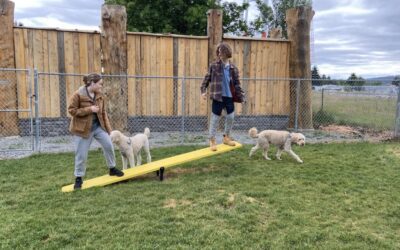



TRAVEL WITH US!
We are currently sailing the South Pacific to Australia.
Thank you for joining us, have a great day!